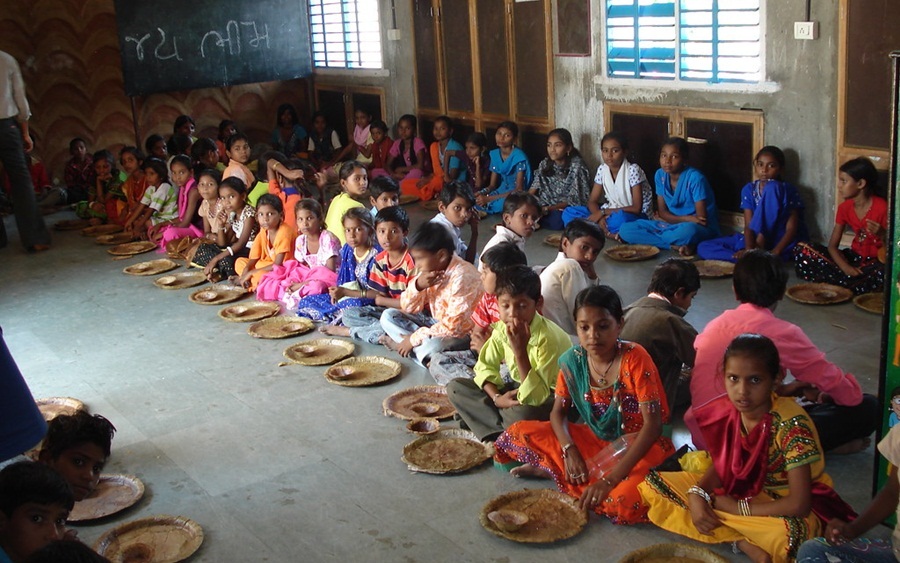This programme achieved a number of beneficial outcomes, including more underprivileged children enrolling and attending school on a regular basis.
Renu Gupta
The government of India’s midday meal programme aims to enhance the nutritional status of school-aged children across the country. On working days, this programme provides free lunches to children in upper elementary and primary classes at government-aided, education guarantee scheme, local body, and alternate innovative Abhiyan and national child labour project schools run by the Ministry of Labour. In the early 1960s, Tamil Nadu’s former chief minister, K. Kamaraj, pioneered the first mid-day meal. Under the instructions of the Supreme Court of India, the system was implemented in all states by 2002.
Education and learning require good nutrition and health. Nutrition continues to be a serious issue in India. Since India’s independence, despite enormous increases in food production and scientific progress, the country has remained static. The national and state governments have been implementing a variety of poverty alleviation programmes for the community’s overall social and economic development, as well as numerous nutrition programmes to help a significant number of individuals who are at risk.
Variations in dietary diversity are significantly connected to changes in micronutrient consumption. Children’s nutritional intake changed as a result of increased eating of fruits, daily foods, green vegetables, and animal foods following the intervention programme.
The five main outcomes of school feeding are:
Nutrition: Improved micronutrient and macronutrient intake leads to improved nutrition and child health, as well as higher learning and lower morbidity for students.
Education: School feeding can help students get into and stay in school by increasing enrolment and decreasing absenteeism. Alleviating short-term hunger among children at school may contribute to improved performance in school tests and promote normal progression from grade to grade in completing their basic education.
Gender: It has been proven that school feeding contributes to gender equality by increasing access to education for orphans and disadvantaged children. This is particularly useful in boosting girls’ enrolment where their access to education is limited.
Value transfer: School feeding assures that studnets are not taken out of school during financial crunch. During periods of poverty and reduced purchasing power, families often resort to negative coping mechanisms, including taking children out of school to save on school fees and related expenses.
Local development: School meals are often linked to health and nutrition, as well as important package initiatives. When food is sourced from disadvantaged, small-holding farms, school feeding has positive consequences for community development and local production.
This programme achieved a number of beneficial outcomes, including more underprivileged children enrolling and attending school on a regular basis. Teachers observed that before the midday meal was supplied in school, students would frequently go home for lunch and then not return to school. However, now that the midday meal is provided in school, students’ attendance has improved. Their mothers, who used to have to interrupt their work in order to feed their children at home throughout the day, no longer have to. Because both lower and upper caste pupils in the school eat this lunch together, and Dalit women have been employed to cook the meal in a few places, this initiative has also helped to decrease caste preconceptions. School feeding is a powerful and effective intervention that can help fight chronic hunger while reducing poverty and inequality.
∎